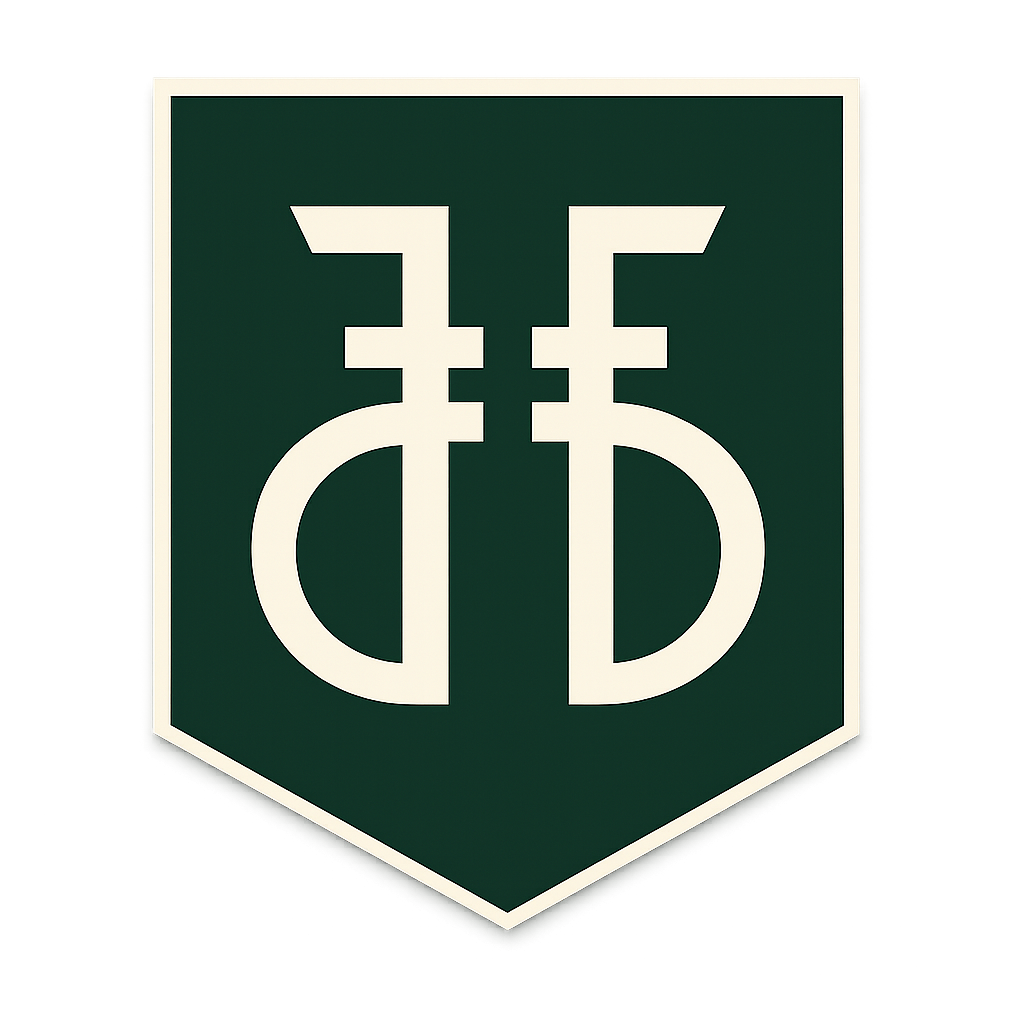FEYDEY High School Mandatory Credits
for FULL-TIME & GSED STUDENTS
for FULL-TIME & GSED STUDENTS
Algebra I,
Algebra II, Geometry,
Trigonometry,
Pre-Calculus,
Calculus.
Algebra II, Geometry,
Trigonometry,
Pre-Calculus,
Calculus.
Chemistry,
Physics,
Biology,
Ecology,
Geology,
Physical Science,
Human Anatomy,
Organic Chemistry.
Physics,
Biology,
Ecology,
Geology,
Physical Science,
Human Anatomy,
Organic Chemistry.
FEYDEY full-time students must earn 24 to 30 High School Credits to receive the FEYDEY High School Diploma
GSED (part-time) students must earn 15 to 21 High School Credits to obtain the FEYDEY High School Diploma, while simultaneously confirming the achievement of the National High School Diploma.
USA History,
US Government,
World History,
World Geography,
US Civics.
US Government,
World History,
World Geography,
US Civics.
English Language I,
English Language II,
English Language III,
English Language IV,
American Literatura.
English Language II,
English Language III,
English Language IV,
American Literatura.
Economics,
Psychology,
Sociology,
Art History I, II,
Visual Art I, II,
Python,
C Programming.
Psychology,
Sociology,
Art History I, II,
Visual Art I, II,
Python,
C Programming.


FEYDEY K-12 Courses, Grades 9 to 12
All 245 courses developed and presented by FEYDEY - Grade Results
High School
34 Courses
HIGH SCHOOL
19 Courses
HIGH SCHOOL
14 Courses
Electives
HIGH SCHOOL
7 Courses
World Languages
HIGH SCHOOL
5 Courses
Arts
HIGH SCHOOL
9 Courses
Advanced Placement course
HIGH SCHOOL
3 Courses
Family and consumer science Electives
HIGH SCHOOL
14 Courses
Microsoft Office
HIGH SCHOOL
4 Courses
ACT Test Prep
HIGH SCHOOL
3 Courses
SAT Test Prep
HIGH SCHOOL
4 Courses
Workkeys Modules
HIGH SCHOOL
1 Courses
IELTS Test Prep
High School
13 Courses
HIGH SCHOOL
22 Courses
Social Studies
HIGH SCHOOL
2 Courses
PE and Health
HIGH SCHOOL
22 Courses
CTE (Career & Technical Education)
HIGH SCHOOL
18 Courses
Career and Medical Electives
HIGH SCHOOL
19 Courses
Business Electives
HIGH SCHOOL
10 Courses
Skill Builder Courses
HIGH SCHOOL
9 Courses
Programming and IT Support
HIGH SCHOOL
3 Courses
SAT Test Prep
HIGH SCHOOL
3 Courses
Praxis Test Prep
HIGH SCHOOL
4 Courses
GED / HiSET Modules
HIGH SCHOOL
1 Courses
NCLEX Test Prep
High School - Math
(Mandatory)
(Mandatory)
Grades 9 to 12
-
 ALGEBRA IThis course builds a foundation of basic Algebra skills that can be built upon in more advanced Math courses. Topics in this course include: Algebraic concepts; real number system using algebraic, graphical, numerical, and verbal representations; rational, irrational, and radical expressions; polynomials; inequalities; relations; functions; factoring; slope; systems of equations; linear, quadratic, radical, literal, exponential, logarithmic, and absolute value equations; box plots; measures of central tendency; data; basic probability and statistics.
ALGEBRA IThis course builds a foundation of basic Algebra skills that can be built upon in more advanced Math courses. Topics in this course include: Algebraic concepts; real number system using algebraic, graphical, numerical, and verbal representations; rational, irrational, and radical expressions; polynomials; inequalities; relations; functions; factoring; slope; systems of equations; linear, quadratic, radical, literal, exponential, logarithmic, and absolute value equations; box plots; measures of central tendency; data; basic probability and statistics. -
 Algebra IIThis course builds a foundation of basic Algebra skills that can be built upon in more advanced Math courses. Topics in this course include: advanced algebra topics; complex numbers; matrices; geometric series; polynomials; rational expressions; systems of equations and inequalities; literal, radical, and quadratic equations; conic sections; piecewise, logarithmic, and exponential functions; graphing; probability and statistics topics.
Algebra IIThis course builds a foundation of basic Algebra skills that can be built upon in more advanced Math courses. Topics in this course include: advanced algebra topics; complex numbers; matrices; geometric series; polynomials; rational expressions; systems of equations and inequalities; literal, radical, and quadratic equations; conic sections; piecewise, logarithmic, and exponential functions; graphing; probability and statistics topics. -
 GeometryThis course is designed to emphasize the study of the properties and applications of common geometric figures in two and three dimensions. Topics covered in this course include: Plane and solid geometry; transformations; similarity; congruence; theorems; constructions; right triangle trigonometry; the Pythagorean theorem; circles; angle relationships; lines including parallel and perpendicular; area; perimeter, and volume of shapes/figures; properties of polygons; cross sections; geometric modeling and probabilities.
GeometryThis course is designed to emphasize the study of the properties and applications of common geometric figures in two and three dimensions. Topics covered in this course include: Plane and solid geometry; transformations; similarity; congruence; theorems; constructions; right triangle trigonometry; the Pythagorean theorem; circles; angle relationships; lines including parallel and perpendicular; area; perimeter, and volume of shapes/figures; properties of polygons; cross sections; geometric modeling and probabilities. -
 Pre-CalculusPre Calculus course combines the study of trigonometry, elementary functions, analytical geometry, and math analysis as preparation for calculus. Students will delve in to the concepts of the complex number system and the vector and matrix quantities. In addition, students will interpret and build functions, understand trigonometric functions, and interpret categorical and quantitative data. Students will also make inferences and draw conclusions and use probability to make decisions.
Pre-CalculusPre Calculus course combines the study of trigonometry, elementary functions, analytical geometry, and math analysis as preparation for calculus. Students will delve in to the concepts of the complex number system and the vector and matrix quantities. In addition, students will interpret and build functions, understand trigonometric functions, and interpret categorical and quantitative data. Students will also make inferences and draw conclusions and use probability to make decisions.
High School - Math
(Elective)
(Elective)
Grades 9 to 12
-
 CalculusThis course is designed to emphasize the study of the properties and applications of common geometric figures in two and three dimensions. Topics covered in this course include: Plane and solid geometry; transformations; similarity; congruence; theorems; constructions; right triangle trigonometry; the Pythagorean theorem; circles; angle relationships; lines including parallel and perpendicular; area; perimeter, and volume of shapes/figures; properties of polygons; cross sections; geometric modeling and probabilities.
CalculusThis course is designed to emphasize the study of the properties and applications of common geometric figures in two and three dimensions. Topics covered in this course include: Plane and solid geometry; transformations; similarity; congruence; theorems; constructions; right triangle trigonometry; the Pythagorean theorem; circles; angle relationships; lines including parallel and perpendicular; area; perimeter, and volume of shapes/figures; properties of polygons; cross sections; geometric modeling and probabilities. -
 Foundations of AlgebraThe primary purpose of the Foundations of Algebra course is to provide a basis for curriculum development for rising 9th grade students in need of substantial support prior to taking Algebra I. The content of this course focuses on equations, inequalities, functions, polynomials, geometry, and statistics as well as the standards of mathematical practice.
Foundations of AlgebraThe primary purpose of the Foundations of Algebra course is to provide a basis for curriculum development for rising 9th grade students in need of substantial support prior to taking Algebra I. The content of this course focuses on equations, inequalities, functions, polynomials, geometry, and statistics as well as the standards of mathematical practice. -
 StatisticsThis course builds a foundation of applications of data in everyday life. Topics in this course include: Scatter plot; histogram; bivariate data; regression; sample space; probability; making decisions; standard deviation; variance; normal distribution; surveys and experiments; hypothesis; reports and data; confidence interval.
StatisticsThis course builds a foundation of applications of data in everyday life. Topics in this course include: Scatter plot; histogram; bivariate data; regression; sample space; probability; making decisions; standard deviation; variance; normal distribution; surveys and experiments; hypothesis; reports and data; confidence interval. -
 TrigonometryThis course deals with relationships involving lengths and angles of triangles that can be built upon in more advanced Math courses. Topics in this course include: Right triangles; trigonometric functions; trigonometric identities; radian; area using trigonometry; periodicity; unit circle.
TrigonometryThis course deals with relationships involving lengths and angles of triangles that can be built upon in more advanced Math courses. Topics in this course include: Right triangles; trigonometric functions; trigonometric identities; radian; area using trigonometry; periodicity; unit circle. -
 Algebra II with TrigonometryThis course builds a foundation of Algebra and Trigonometry skills that can be built upon in more advanced Math courses. Topics in this course include: Advanced algebra topics; complex numbers; vectors and matrices; series; polynomials; rational expressions; systems of equations and inequalities; linear, quadratic, radical, and literal equations; exponential and logarithmic functions; graphing; trigonometric ratios and functions; probability and statistics.
Algebra II with TrigonometryThis course builds a foundation of Algebra and Trigonometry skills that can be built upon in more advanced Math courses. Topics in this course include: Advanced algebra topics; complex numbers; vectors and matrices; series; polynomials; rational expressions; systems of equations and inequalities; linear, quadratic, radical, and literal equations; exponential and logarithmic functions; graphing; trigonometric ratios and functions; probability and statistics. -
 Algebra IIIThis course builds a foundation of basic Algebra skills that can be built upon in more advanced Math courses. Topics in this course include sequences and series, functions, and higher order polynomials. Polynomial functions provide the context for higher order investigations. Topics are addressed from a numeric, graphical, and analytical perspective.
Algebra IIIThis course builds a foundation of basic Algebra skills that can be built upon in more advanced Math courses. Topics in this course include sequences and series, functions, and higher order polynomials. Polynomial functions provide the context for higher order investigations. Topics are addressed from a numeric, graphical, and analytical perspective. -
 Probability and StatisticsThis course has the probability and statistics skills that can be built upon in more advanced Math courses. Topics in this course include: Box and Whisker Plots, Measures of Central Tendency, Percentiles and Quartiles, Standard Deviation and Variance, Interpreting and Comparing Data Distributions, Normal Distribution, Constructing and Interpreting Two Way Frequency Tables, Fitting of a Curve, Interpreting Rate of Change and Linear Functions, Linear Regression, Correlation and Causation, Valid Claims, Fair Games, Probability Using Simulation, Sample Surveys, Experiments, and Observational Studies, Confidence Interval for Population Mean, Comparing Two Treatments of a Randomized Experiment, Evaluate Reports Based on Data, Sample Space and Operations, Probability of Independent and Dependent Events, Conditional Probability, Addition Rule in Probability, Probability with Permutations and Combinations, Constructing Probability Distributions, Making Decisions with Expected Values, and Making Decisions Using Probability.
Probability and StatisticsThis course has the probability and statistics skills that can be built upon in more advanced Math courses. Topics in this course include: Box and Whisker Plots, Measures of Central Tendency, Percentiles and Quartiles, Standard Deviation and Variance, Interpreting and Comparing Data Distributions, Normal Distribution, Constructing and Interpreting Two Way Frequency Tables, Fitting of a Curve, Interpreting Rate of Change and Linear Functions, Linear Regression, Correlation and Causation, Valid Claims, Fair Games, Probability Using Simulation, Sample Surveys, Experiments, and Observational Studies, Confidence Interval for Population Mean, Comparing Two Treatments of a Randomized Experiment, Evaluate Reports Based on Data, Sample Space and Operations, Probability of Independent and Dependent Events, Conditional Probability, Addition Rule in Probability, Probability with Permutations and Combinations, Constructing Probability Distributions, Making Decisions with Expected Values, and Making Decisions Using Probability. -
 Applied Math ConceptsThis course builds a foundation of applications of data in everyday life. Topics in this course include: amortization, annuities, and sinking fund, importance of financial modeling, future and present values, depreciation schedules, financial decision making, arithmetic and geometric sequence in financial math, finance involving compound interest, transcendental functions, order of magnitudes, system of linear equations, linear programming optimization, logical circuits, construction of truth tables, problem solving strategies, conditional statements, logic puzzles, arguments with quantifiers, Venn diagrams, logical statements of networks, tree diagram and counting principle, measures of central tendency, fair games, organizing and analyzing data, investment strategy, permutations and combinations, probability and making decision using it, law of large numbers, examples of consequences and innumeracy, expected value and standard deviation, normal distribution, and confidence interval for population mean and proportions.
Applied Math ConceptsThis course builds a foundation of applications of data in everyday life. Topics in this course include: amortization, annuities, and sinking fund, importance of financial modeling, future and present values, depreciation schedules, financial decision making, arithmetic and geometric sequence in financial math, finance involving compound interest, transcendental functions, order of magnitudes, system of linear equations, linear programming optimization, logical circuits, construction of truth tables, problem solving strategies, conditional statements, logic puzzles, arguments with quantifiers, Venn diagrams, logical statements of networks, tree diagram and counting principle, measures of central tendency, fair games, organizing and analyzing data, investment strategy, permutations and combinations, probability and making decision using it, law of large numbers, examples of consequences and innumeracy, expected value and standard deviation, normal distribution, and confidence interval for population mean and proportions. -
 Math EssentialsThis course provides the foundation of skills necessary for success in algebra and beyond. Topics in this course include: Customary and metric units; ratios and proportions; scale drawing; complex numbers; probability; tree diagram; bar, line, and circle graphs; exponents; trigonometry; expressions; slope; midpoint; transformations; geometry concepts; polygons, the Pythagorean theorem; distance; similarity and congruence; functions; equations and inequalities; parallel and perpendicular lines; rate of change; rational functions; factoring; radicals.
Math EssentialsThis course provides the foundation of skills necessary for success in algebra and beyond. Topics in this course include: Customary and metric units; ratios and proportions; scale drawing; complex numbers; probability; tree diagram; bar, line, and circle graphs; exponents; trigonometry; expressions; slope; midpoint; transformations; geometry concepts; polygons, the Pythagorean theorem; distance; similarity and congruence; functions; equations and inequalities; parallel and perpendicular lines; rate of change; rational functions; factoring; radicals. -
 Financial MathematicsThis course is designed to focus on mathematical concepts and applications needed for the design and management of personal and business finances. This course extends students' knowledge of whole numbers, fractions, decimals, and percents as well as basic statistics and probability, algebra, geometry, and data analysis in the context of relevant real life problem solving situations. Emphasis is placed on various mathematical processes which include manual or electronic calculations of payroll, income tax preparations, interest computation, consumer information, managing income, buying insurance, selling and buying, making sound credit and investment decisions and other items that may be related to personal and business transactions.
Financial MathematicsThis course is designed to focus on mathematical concepts and applications needed for the design and management of personal and business finances. This course extends students' knowledge of whole numbers, fractions, decimals, and percents as well as basic statistics and probability, algebra, geometry, and data analysis in the context of relevant real life problem solving situations. Emphasis is placed on various mathematical processes which include manual or electronic calculations of payroll, income tax preparations, interest computation, consumer information, managing income, buying insurance, selling and buying, making sound credit and investment decisions and other items that may be related to personal and business transactions. -
 Analytical MathematicsAnalytical Mathematics course combines the study of number and quantity, algebra, and functions. Students will delve in to the concepts of the complex number system, the vector and matrix quantities, and the Fundamental Theorem of Algebra. In addition, students will understand limits of functions, trigonometric functions, and laws of sines and cosines.
Analytical MathematicsAnalytical Mathematics course combines the study of number and quantity, algebra, and functions. Students will delve in to the concepts of the complex number system, the vector and matrix quantities, and the Fundamental Theorem of Algebra. In addition, students will understand limits of functions, trigonometric functions, and laws of sines and cosines. -
 Transition to MathThis course acts as a stepping-stone between the processes learned in Pre Transition Mathematics or Everyday Mathematics 6 to the material presented in Algebra and Geometry. Topics in this course include: Algebraic concepts; real number system using algebraic, graphical, numerical, and verbal representations; expressions; inequalities; relations; functions; factoring; measurements; distance; midpoint; slope; systems of equations; linear, and radical equations; basic probability and data.
Transition to MathThis course acts as a stepping-stone between the processes learned in Pre Transition Mathematics or Everyday Mathematics 6 to the material presented in Algebra and Geometry. Topics in this course include: Algebraic concepts; real number system using algebraic, graphical, numerical, and verbal representations; expressions; inequalities; relations; functions; factoring; measurements; distance; midpoint; slope; systems of equations; linear, and radical equations; basic probability and data. -
 Transition to AlgebraThis course builds a foundation of basic Algebra skills that can be built upon in more advanced Math courses. Topics in this course include: Algebraic concepts; real number system using algebraic, graphical, numerical, and verbal representations; scientific notation; polynomials; expressions; inequalities; relations; functions; factoring; slope; linear and literal equations; the Pythagorean theorem; measurements; distance; midpoint; basic probability and statistics.
Transition to AlgebraThis course builds a foundation of basic Algebra skills that can be built upon in more advanced Math courses. Topics in this course include: Algebraic concepts; real number system using algebraic, graphical, numerical, and verbal representations; scientific notation; polynomials; expressions; inequalities; relations; functions; factoring; slope; linear and literal equations; the Pythagorean theorem; measurements; distance; midpoint; basic probability and statistics. -
 Senior Finite MathTopics in this course include: Matrices; scalar multiplication; exponential and logarithmic functions; system of equations; set theory; permutations and combinations; probability; reports and data; tree diagram; central tendency; fair games.
Senior Finite MathTopics in this course include: Matrices; scalar multiplication; exponential and logarithmic functions; system of equations; set theory; permutations and combinations; probability; reports and data; tree diagram; central tendency; fair games. -
 Advanced Algebra and TrigonometryThis course builds a foundation of Algebra and Trigonometry skills that can be built upon in more advanced Math courses. Topics in this course include: laws of exponents; operations on rational expressions; complex numbers; polar forms; fundamental theorem of algebra; vectors; matrices; series; binomial theorem; conic sections; functions; graphing linear, quadratic, and rational functions; composition of functions; inverse functions; polynomials; trigonometry; area of sector; arc length; law of sines and cosines; trigonometric identities; scatter plot; and line of best fit.
Advanced Algebra and TrigonometryThis course builds a foundation of Algebra and Trigonometry skills that can be built upon in more advanced Math courses. Topics in this course include: laws of exponents; operations on rational expressions; complex numbers; polar forms; fundamental theorem of algebra; vectors; matrices; series; binomial theorem; conic sections; functions; graphing linear, quadratic, and rational functions; composition of functions; inverse functions; polynomials; trigonometry; area of sector; arc length; law of sines and cosines; trigonometric identities; scatter plot; and line of best fit. -
 Advanced Math Pre-CalculusThis course introduces the foundations of analysis designed to precede the calculus sequence with emphasis on functions and graphs. Topics covered in this course include: Complex number system; radicals; exponents; graphing functions; trigonometry; factoring; quadratic, absolute value, rational, exponential and logarithmic equations; measures of angles; Pythagorean theorem; slope; circle; sequence; conic sections and coordinate geometry.
Advanced Math Pre-CalculusThis course introduces the foundations of analysis designed to precede the calculus sequence with emphasis on functions and graphs. Topics covered in this course include: Complex number system; radicals; exponents; graphing functions; trigonometry; factoring; quadratic, absolute value, rational, exponential and logarithmic equations; measures of angles; Pythagorean theorem; slope; circle; sequence; conic sections and coordinate geometry. -
 Advanced Math-Functions & StatisticsTopics covered in this course include probability, statistics, and mathematics of personal finance. This course is a pre-calculus analysis of the real number system.
Advanced Math-Functions & StatisticsTopics covered in this course include probability, statistics, and mathematics of personal finance. This course is a pre-calculus analysis of the real number system. -
 Remediation MathThis course deals with knowledge of standards based pedagogical instructional practices to facilitate and enhance learning for students who struggle with math concepts.
Remediation MathThis course deals with knowledge of standards based pedagogical instructional practices to facilitate and enhance learning for students who struggle with math concepts. -
 Bridge MathThis is a course intended to build upon concepts taught in previous courses to allow students to gain a deeper knowledge of the real and complex number systems as well as the structure, use, and application of equations, expressions, polynomials, inequalities, and functions. Functions emphasized include linear, quadratic, exponential, and absolute value. Students continue mastery of geometric concepts such as similarity, right triangles, circles, area, perimeter, and volume. Students use categorical and quantitative data to model real life situations and rules of probability to compute probabilities of compound events.
Bridge MathThis is a course intended to build upon concepts taught in previous courses to allow students to gain a deeper knowledge of the real and complex number systems as well as the structure, use, and application of equations, expressions, polynomials, inequalities, and functions. Functions emphasized include linear, quadratic, exponential, and absolute value. Students continue mastery of geometric concepts such as similarity, right triangles, circles, area, perimeter, and volume. Students use categorical and quantitative data to model real life situations and rules of probability to compute probabilities of compound events. -
 Developmental MathThis course progresses through the basic elements of arithmetic into beginning of algebra. Topics in this course include: Addition and subtraction of whole numbers; multiplication and division; decimals; add, subtract, multiply and divide fractions; ratios; customary and metric units; percents; exponents; expressions; equations and inequalities; system of equations and inequalities; polynomials; factoring; quadratic equations.
Developmental MathThis course progresses through the basic elements of arithmetic into beginning of algebra. Topics in this course include: Addition and subtraction of whole numbers; multiplication and division; decimals; add, subtract, multiply and divide fractions; ratios; customary and metric units; percents; exponents; expressions; equations and inequalities; system of equations and inequalities; polynomials; factoring; quadratic equations. -
 Basic MathThis course builds a foundation of basic math skills that can be built upon in more advanced Math courses. Topics in this course include: Order of operations; expressions; pattern; place value; estimation; multiplication and division; decimals; add, subtract, multiply, and divide fractions; coordinate plane; number line; equations; area and perimeter; polygons; ratios; decimals to fractions; circumference; angles; rational and irrational numbers; exponents; radicals; linear and non-linear functions; transformations; parallel lines; the Pythagorean theorem.
Basic MathThis course builds a foundation of basic math skills that can be built upon in more advanced Math courses. Topics in this course include: Order of operations; expressions; pattern; place value; estimation; multiplication and division; decimals; add, subtract, multiply, and divide fractions; coordinate plane; number line; equations; area and perimeter; polygons; ratios; decimals to fractions; circumference; angles; rational and irrational numbers; exponents; radicals; linear and non-linear functions; transformations; parallel lines; the Pythagorean theorem. -
 College AlgebraThis course builds a foundation of basic Algebra skills that can be built upon in more advanced Math courses. Topics in this course include: Algebraic concepts; real number system using algebraic, graphical, numerical, and verbal representations; polynomials; expressions; inequalities; relations; functions; factoring; complex numbers; distance; midpoint; slope; systems of equations; linear, quadratic, rational, radical, literal, and absolute value equations; matrices; coordinate geometry.
College AlgebraThis course builds a foundation of basic Algebra skills that can be built upon in more advanced Math courses. Topics in this course include: Algebraic concepts; real number system using algebraic, graphical, numerical, and verbal representations; polynomials; expressions; inequalities; relations; functions; factoring; complex numbers; distance; midpoint; slope; systems of equations; linear, quadratic, rational, radical, literal, and absolute value equations; matrices; coordinate geometry. -
 Intensive MathematicsThis course focuses on the understanding of polynomials and rational expressions, creating and solving equations, and reasoning with equations and inequalities. Students will also build various functions, interpret them using key features, and compare properties of two functions. Emphasis will be placed on constructing linear, quadratic, and exponential models. This course emphasizes the study of circles, construction of inscribed and circumscribed circles of a triangle, transformations, similarity and congruence, and proving theorems. Volume and surface area, cross sections, parallel and perpendicular lines, area and perimeter, and modeling with geometry are also emphasized. In addition, students will also work on trigonometric ratios, similarity, and application of right triangles. Emphasis will be placed on real number system and interpreting categorical and quantitative data.
Intensive MathematicsThis course focuses on the understanding of polynomials and rational expressions, creating and solving equations, and reasoning with equations and inequalities. Students will also build various functions, interpret them using key features, and compare properties of two functions. Emphasis will be placed on constructing linear, quadratic, and exponential models. This course emphasizes the study of circles, construction of inscribed and circumscribed circles of a triangle, transformations, similarity and congruence, and proving theorems. Volume and surface area, cross sections, parallel and perpendicular lines, area and perimeter, and modeling with geometry are also emphasized. In addition, students will also work on trigonometric ratios, similarity, and application of right triangles. Emphasis will be placed on real number system and interpreting categorical and quantitative data. -
 Integrated Mathematics IThis course emphasizes linear and exponential expressions, equations, and functions. This course also focuses on geometric congruence and interpreting linear models from quantitative data. Categorical and quantitative data, Reasoning with equations by solving systems of equations in two variables are dealt with in this course.
Integrated Mathematics IThis course emphasizes linear and exponential expressions, equations, and functions. This course also focuses on geometric congruence and interpreting linear models from quantitative data. Categorical and quantitative data, Reasoning with equations by solving systems of equations in two variables are dealt with in this course. -
 Integrated Mathematics IIThis course builds upon concepts taught in Integrated Math I with an emphasis on quadratic and polynomial expressions, equations, and functions. This course also focuses on geometric similarity and interpreting functions from a real life context. Students extend previous knowledge of exponential properties to rational exponents. This course also introduces probability of compound events and the complex number system.
Integrated Mathematics IIThis course builds upon concepts taught in Integrated Math I with an emphasis on quadratic and polynomial expressions, equations, and functions. This course also focuses on geometric similarity and interpreting functions from a real life context. Students extend previous knowledge of exponential properties to rational exponents. This course also introduces probability of compound events and the complex number system. -
 Integrated Mathematics IIIThis course builds upon concepts taught in Integrated Math I and Integrated Math II and emphasizes polynomial and rational expressions, equations, and functions. This course has a focus on geometric modeling and using algebra to prove geometric theorems. This course also introduces students to circles, basic trigonometric functions, and foundational statistics skills such as interpretation of data and making statistical inferences.
Integrated Mathematics IIIThis course builds upon concepts taught in Integrated Math I and Integrated Math II and emphasizes polynomial and rational expressions, equations, and functions. This course has a focus on geometric modeling and using algebra to prove geometric theorems. This course also introduces students to circles, basic trigonometric functions, and foundational statistics skills such as interpretation of data and making statistical inferences. -
 RC Algebra IThis course builds a foundation of basic Algebra skills that can be built upon in more advanced Math courses. Topics in this course include: Algebraic concepts; real number system using algebraic, graphical, numerical, and verbal representations; rational, irrational, and radical expressions; polynomials; inequalities; relations; functions; factoring; slope; systems of equations; linear, quadratic, radical, literal, exponential, logarithmic, and absolute value equations; box plots; measures of central tendency; data; basic probability and statistics.
RC Algebra IThis course builds a foundation of basic Algebra skills that can be built upon in more advanced Math courses. Topics in this course include: Algebraic concepts; real number system using algebraic, graphical, numerical, and verbal representations; rational, irrational, and radical expressions; polynomials; inequalities; relations; functions; factoring; slope; systems of equations; linear, quadratic, radical, literal, exponential, logarithmic, and absolute value equations; box plots; measures of central tendency; data; basic probability and statistics. -
 RC Bridge MathThis is a course intended to build upon concepts taught in previous courses to allow students to gain a deeper knowledge of the real and complex number systems as well as the structure, use, and application of equations, expressions, polynomials, inequalities, and functions. Functions emphasized include linear, quadratic, exponential, and absolute value. Students continue mastery of geometric concepts such as similarity, right triangles, circles, area, perimeter, and volume. Students use categorical and quantitative data to model real life situations and rules of probability to compute probabilities of compound events.
RC Bridge MathThis is a course intended to build upon concepts taught in previous courses to allow students to gain a deeper knowledge of the real and complex number systems as well as the structure, use, and application of equations, expressions, polynomials, inequalities, and functions. Functions emphasized include linear, quadratic, exponential, and absolute value. Students continue mastery of geometric concepts such as similarity, right triangles, circles, area, perimeter, and volume. Students use categorical and quantitative data to model real life situations and rules of probability to compute probabilities of compound events. -
 RC GeometryThis course is designed to emphasize the study of the properties and applications of common geometric figures in two and three dimensions. Topics covered in this course include: Plane and solid geometry; transformations; similarity; congruence; theorems; constructions; right-triangle trigonometry; the Pythagorean theorem; circles; angle relationships; lines including parallel and perpendicular; area; perimeter, and volume of shapes/figures; properties of polygons; cross sections; geometric modeling and probabilities.
RC GeometryThis course is designed to emphasize the study of the properties and applications of common geometric figures in two and three dimensions. Topics covered in this course include: Plane and solid geometry; transformations; similarity; congruence; theorems; constructions; right-triangle trigonometry; the Pythagorean theorem; circles; angle relationships; lines including parallel and perpendicular; area; perimeter, and volume of shapes/figures; properties of polygons; cross sections; geometric modeling and probabilities. -
 RC Pre-AlgebraThis course builds a foundation of Pre-Algebra skills that can be built upon in more advanced Math courses. Topics in this course include: Real number system using algebraic, graphical, numerical, and verbal representations; ratios and rates; scientific notation; decimals; exponents; expressions; inequalities; relations; functions; perimeter; area; volume; circumference; distance; midpoint; slope; symmetry; linear, quadratic, radical, and literal equations; basic probability and statistics.
RC Pre-AlgebraThis course builds a foundation of Pre-Algebra skills that can be built upon in more advanced Math courses. Topics in this course include: Real number system using algebraic, graphical, numerical, and verbal representations; ratios and rates; scientific notation; decimals; exponents; expressions; inequalities; relations; functions; perimeter; area; volume; circumference; distance; midpoint; slope; symmetry; linear, quadratic, radical, and literal equations; basic probability and statistics.
High School - English
(Mandatory)
(Mandatory)
Grades 9 to 12
-
 English IThis freshman year course is designed to help students develop grammar mechanics, reading, writing, and comprehension skills. Students will have the opportunity to learn across the curriculum as key vocabulary words in this course contain words relevant to Science, Mathematics, Social Studies, and Arts. In addition, students will read texts of various literary genres: poetry, novel, drama, and non-fiction. By this, the students will be able to analyze texts across genres. Emphasis will also be given to the research process, source collection, and the different types of writing: narrative, argumentative, and expository.
English IThis freshman year course is designed to help students develop grammar mechanics, reading, writing, and comprehension skills. Students will have the opportunity to learn across the curriculum as key vocabulary words in this course contain words relevant to Science, Mathematics, Social Studies, and Arts. In addition, students will read texts of various literary genres: poetry, novel, drama, and non-fiction. By this, the students will be able to analyze texts across genres. Emphasis will also be given to the research process, source collection, and the different types of writing: narrative, argumentative, and expository. -
 English IIThe sophomore course, English II, reinforces the skills learned in English I and previous Language Arts courses. Students will also be able to make connections within texts, identify fallacies, and write narrative, argumentative, and expository essays. In addition, students will read texts of various literary genres: poetry, novel, drama, and non-fiction. English II contains the instructions and strategies required in writing research papers. This also includes instruction on proper style formatting following the Modern Language Association and Chicago Manual of Style.
English IIThe sophomore course, English II, reinforces the skills learned in English I and previous Language Arts courses. Students will also be able to make connections within texts, identify fallacies, and write narrative, argumentative, and expository essays. In addition, students will read texts of various literary genres: poetry, novel, drama, and non-fiction. English II contains the instructions and strategies required in writing research papers. This also includes instruction on proper style formatting following the Modern Language Association and Chicago Manual of Style. -
 English IIIThis junior-year English course reinforces the skills learned in English I, English II, and previous Language Arts courses. Students will be able to identify text structure and make inferences about how author's lives and historical events impact literature. This course also includes the instruction and strategies necessary for writing argumentative essays, writing research papers, properly citing sources, preparing oral presentations, and proper use of reference materials. Additionally, students will demonstrate their ability to use euphemisms, oxymorons, and other literary elements.
English IIIThis junior-year English course reinforces the skills learned in English I, English II, and previous Language Arts courses. Students will be able to identify text structure and make inferences about how author's lives and historical events impact literature. This course also includes the instruction and strategies necessary for writing argumentative essays, writing research papers, properly citing sources, preparing oral presentations, and proper use of reference materials. Additionally, students will demonstrate their ability to use euphemisms, oxymorons, and other literary elements. -
 English IVThis is an advanced, senior level course in English designed to provide students the special attention to the analysis of literature and learning different essay formats. In the analysis of literature, students will understand the recurrent themes prevalent in literature and multiple themes that lead to richness in a text. In addition, students will read and analyze the renown themes in US documents and understand how organizational strategies help understand texts better. In grammar and conventions, emphasis will be given on the use of modifiers, sentence structure, and how punctuation marks like parentheses help in clarity.
English IVThis is an advanced, senior level course in English designed to provide students the special attention to the analysis of literature and learning different essay formats. In the analysis of literature, students will understand the recurrent themes prevalent in literature and multiple themes that lead to richness in a text. In addition, students will read and analyze the renown themes in US documents and understand how organizational strategies help understand texts better. In grammar and conventions, emphasis will be given on the use of modifiers, sentence structure, and how punctuation marks like parentheses help in clarity.
High School - English
(Elective)
(Elective)
Grades 9 to 12
-
 Remediation EnglishThis course is designed to help students develop both descriptive and prescriptive approaches to the grammar of English language. Topics covered in this course include: simple comprehension texts of description, narration, information, explanation and persuasion, parts of speech, use of auxiliaries, punctuations, etc.
Remediation EnglishThis course is designed to help students develop both descriptive and prescriptive approaches to the grammar of English language. Topics covered in this course include: simple comprehension texts of description, narration, information, explanation and persuasion, parts of speech, use of auxiliaries, punctuations, etc. -
 Senior Applications in EnglishThis course is designed to help students read literacy texts, vocabulary and language skills, both oral and written. In addition, the student will write an autobiographical essay and will respond with personal connections to literacy selections.
Senior Applications in EnglishThis course is designed to help students read literacy texts, vocabulary and language skills, both oral and written. In addition, the student will write an autobiographical essay and will respond with personal connections to literacy selections. -
 American LiteratureThis course is designed to help students develop grammar mechanics, reading, writing, and comprehension skills. Students will read texts of various literary genres: poetry, novel, drama, and non fiction, and will be able to understand the importance of text structure and understand how authors lives and historical events impact literature. This course also includes instruction on writing argumentative essays as well as strategies in writing research papers, cite sources, do oral presentation, and use proper reference materials for research. In addition, students will also understand the use of euphemism and oxymoron and other literary elements. Also, instructions on proper style formatting following the Modern Language Association Chicago Manual of Style.
American LiteratureThis course is designed to help students develop grammar mechanics, reading, writing, and comprehension skills. Students will read texts of various literary genres: poetry, novel, drama, and non fiction, and will be able to understand the importance of text structure and understand how authors lives and historical events impact literature. This course also includes instruction on writing argumentative essays as well as strategies in writing research papers, cite sources, do oral presentation, and use proper reference materials for research. In addition, students will also understand the use of euphemism and oxymoron and other literary elements. Also, instructions on proper style formatting following the Modern Language Association Chicago Manual of Style. -
 Developmental ReadingThis course is designed to help students develop writing and reading skills. Course topics include: Context Clues, Key Vocabulary, Connotation and Denotation, Foreign Words, Recurrent Themes in World Literature, Develop a PromptAudience and Purpose, Analyze Author's Style and Diction, Argumentative Writing.
Developmental ReadingThis course is designed to help students develop writing and reading skills. Course topics include: Context Clues, Key Vocabulary, Connotation and Denotation, Foreign Words, Recurrent Themes in World Literature, Develop a PromptAudience and Purpose, Analyze Author's Style and Diction, Argumentative Writing. -
 Developmental EnglishThis course is designed to help students develop grammar mechanics and writing skills. Course topics include: Review Parts of Speech, Pronouns, Modifiers, Sentence Structure, Punctuation, Style Tone and Language, Writing Process.
Developmental EnglishThis course is designed to help students develop grammar mechanics and writing skills. Course topics include: Review Parts of Speech, Pronouns, Modifiers, Sentence Structure, Punctuation, Style Tone and Language, Writing Process. -
 RC English IThis freshman-year course is designed to help students develop grammar mechanics, reading, writing, and comprehension skills. Students will have the opportunity to learn across the curriculum as key vocabulary words in this course contain words relevant to Science, Mathematics, Social Studies, and Arts. In addition, students will read texts of various literary genres: poetry, novel, drama, and non fiction. By this, the students will be able to analyze texts across genres. Emphasis will also be given to the research process, source collection, and the different types of writing: narrative, argumentative, and expository.
RC English IThis freshman-year course is designed to help students develop grammar mechanics, reading, writing, and comprehension skills. Students will have the opportunity to learn across the curriculum as key vocabulary words in this course contain words relevant to Science, Mathematics, Social Studies, and Arts. In addition, students will read texts of various literary genres: poetry, novel, drama, and non fiction. By this, the students will be able to analyze texts across genres. Emphasis will also be given to the research process, source collection, and the different types of writing: narrative, argumentative, and expository. -
 RC English IIThe sophomore course, English II, reinforces the skills learned in English I and previous Language Arts courses. Students will also be able to make connections within texts, identify fallacies, and write narrative, argumentative, and expository essays. In addition, students will read texts of various literary genres: poetry, novel, drama, and non-fiction. English II contains the instructions and strategies required in writing research papers. This also includes instruction on proper style formatting following the Modern Language Association and Chicago Manual of Style.
RC English IIThe sophomore course, English II, reinforces the skills learned in English I and previous Language Arts courses. Students will also be able to make connections within texts, identify fallacies, and write narrative, argumentative, and expository essays. In addition, students will read texts of various literary genres: poetry, novel, drama, and non-fiction. English II contains the instructions and strategies required in writing research papers. This also includes instruction on proper style formatting following the Modern Language Association and Chicago Manual of Style. -
 RC English IIIThis junior-year English course reinforces the skills learned in English I, English II, and previous Language Arts courses. Students will be able to identify text structure and make inferences about how author's lives and historical events impact literature. This course also includes the instruction and strategies necessary for writing argumentative essays, writing research papers, properly citing sources, preparing oral presentations, and proper use of reference materials. Additionally, students will demonstrate their ability to use euphemisms, oxymorons, and other literary elements.
RC English IIIThis junior-year English course reinforces the skills learned in English I, English II, and previous Language Arts courses. Students will be able to identify text structure and make inferences about how author's lives and historical events impact literature. This course also includes the instruction and strategies necessary for writing argumentative essays, writing research papers, properly citing sources, preparing oral presentations, and proper use of reference materials. Additionally, students will demonstrate their ability to use euphemisms, oxymorons, and other literary elements. -
 RC English IVThis is an advanced, senior level course in English designed to provide students the special attention to the analysis of literature and learning different essay formats. In the analysis of literature, students will understand the recurrent themes prevalent in literature and multiple themes that lead to richness in a text. In addition, students will read and analyze the renown themes in US documents and understand how organizational strategies help understand texts better. In grammar and conventions, emphasis will be given on the use of modifiers, sentence structure, and how punctuation marks like parentheses help in clarity.
RC English IVThis is an advanced, senior level course in English designed to provide students the special attention to the analysis of literature and learning different essay formats. In the analysis of literature, students will understand the recurrent themes prevalent in literature and multiple themes that lead to richness in a text. In addition, students will read and analyze the renown themes in US documents and understand how organizational strategies help understand texts better. In grammar and conventions, emphasis will be given on the use of modifiers, sentence structure, and how punctuation marks like parentheses help in clarity.
High School - Science
(Mandatory)
(Mandatory)
Grades 9 to 12
-
 Biology/Life ScienceBiology is a laboratory science course that deals with the study of cells and organelles, relationship between DNA, genes, chromosomes, and proteins, and levels of organization, homeostasis, microorganisms, and diseases. Students will also understand the genetics and heredity through the cell cycle, cancer, heredity and inheritance patterns, genetic variation, Punnett square. In addition, students will also focus on the photosynthesis in plants, biological polymers, speciation, and causes of loss of biodiversity. Students will then attain knowledge on nutrient cycle, energy flow in an ecosystem, biological succession, density dependent and independent factors, natural selection, and threats to biodiversity.
Biology/Life ScienceBiology is a laboratory science course that deals with the study of cells and organelles, relationship between DNA, genes, chromosomes, and proteins, and levels of organization, homeostasis, microorganisms, and diseases. Students will also understand the genetics and heredity through the cell cycle, cancer, heredity and inheritance patterns, genetic variation, Punnett square. In addition, students will also focus on the photosynthesis in plants, biological polymers, speciation, and causes of loss of biodiversity. Students will then attain knowledge on nutrient cycle, energy flow in an ecosystem, biological succession, density dependent and independent factors, natural selection, and threats to biodiversity. -
 ChemistryThis course is the comprehensive study of concepts, principles, and theories related to the field of Chemistry. Topics in this course include: models of atoms, patterns and trends in organization of elements in the periodic table, average atomic mass, metals, nonmetals, and metalloids, nomenclature of ionic compounds, binary compounds, and acids, valence electrons and bonds. In addition, the students examine the intensive and extensive properties of elements, compounds, and mixtures, mass and chemical reactions, and conservation of mass. They will also estimate the effect of temperature on solubility and rate of reaction, the different states of matter and properties of acids and bases. Students will focus on the different gas laws, chemical equilibrium, and particle motion in matter and endothermic and exothermic changes.
ChemistryThis course is the comprehensive study of concepts, principles, and theories related to the field of Chemistry. Topics in this course include: models of atoms, patterns and trends in organization of elements in the periodic table, average atomic mass, metals, nonmetals, and metalloids, nomenclature of ionic compounds, binary compounds, and acids, valence electrons and bonds. In addition, the students examine the intensive and extensive properties of elements, compounds, and mixtures, mass and chemical reactions, and conservation of mass. They will also estimate the effect of temperature on solubility and rate of reaction, the different states of matter and properties of acids and bases. Students will focus on the different gas laws, chemical equilibrium, and particle motion in matter and endothermic and exothermic changes. -
 PhysicsThis course is the comprehensive study of concepts and principles related to the field of Physics. Topics in this course include: motion graphs, kinematic equations, projectile motion, force and laws of motion, free body diagram, and circular motion. In addition, student evaluate the conservation of energy or change of energy in motion and the conservation of linear momentum and collisions during heat transfer through Earth's systems by analyzing the laws of thermodynamics. They also analyze the waves and their applications in technologies for information transfer based on Doppler Effect in sound, properties of light, Snell's law, and the intensity of light with respect to distance. In addition, students explore the electric and magnetic fields and evaluate series and parallel circuits
PhysicsThis course is the comprehensive study of concepts and principles related to the field of Physics. Topics in this course include: motion graphs, kinematic equations, projectile motion, force and laws of motion, free body diagram, and circular motion. In addition, student evaluate the conservation of energy or change of energy in motion and the conservation of linear momentum and collisions during heat transfer through Earth's systems by analyzing the laws of thermodynamics. They also analyze the waves and their applications in technologies for information transfer based on Doppler Effect in sound, properties of light, Snell's law, and the intensity of light with respect to distance. In addition, students explore the electric and magnetic fields and evaluate series and parallel circuits -
 Environmental ScienceThis course is the comprehensive study of concepts and principles related to the field of Environmental Science. Topics in this course include: renewable and non-renewable energy, carbon cycle, impact of environmental factors on population, impact of various factors on the ecosystem, effect of invasive species on ecosystem, biological succession, endangered organisms, nutrient cycle, water cycle, conservation of water, effects of pollution, environmental policies, and global climate patterns.
Environmental ScienceThis course is the comprehensive study of concepts and principles related to the field of Environmental Science. Topics in this course include: renewable and non-renewable energy, carbon cycle, impact of environmental factors on population, impact of various factors on the ecosystem, effect of invasive species on ecosystem, biological succession, endangered organisms, nutrient cycle, water cycle, conservation of water, effects of pollution, environmental policies, and global climate patterns.
High School - Science
(Elective)
(Elective)
Grades 9 to 12
-
 Physical SciencePhysical Science is a laboratory science course that surveys the core ideas in the physical sciences, which are covered in chemistry and physics courses in detail. This course investigates concepts such as the conceptualization of matter and its interactions by studying the valence electrons and bonds, properties of acids and bases, in various chemical reactions. Students will also examine the motion and stability of objects experiencing forces and interactions. They analyze the motion graphs, kinematic equations, and conservation of linear momentum and collisions and evaluate series and parallel circuits. Also, they observe the change of energy in motion, and conservation of energy, and the propagation of waves in different media.
Physical SciencePhysical Science is a laboratory science course that surveys the core ideas in the physical sciences, which are covered in chemistry and physics courses in detail. This course investigates concepts such as the conceptualization of matter and its interactions by studying the valence electrons and bonds, properties of acids and bases, in various chemical reactions. Students will also examine the motion and stability of objects experiencing forces and interactions. They analyze the motion graphs, kinematic equations, and conservation of linear momentum and collisions and evaluate series and parallel circuits. Also, they observe the change of energy in motion, and conservation of energy, and the propagation of waves in different media. -
 Earth ScienceEarth Science is a laboratory science course that deals with the concepts of energy in Earth's system and the origin and evolution of Earth system. Students deal with identifying the Earth's place in the universe with respect to the life cycle of stars, the big bang theory, plate movements, and geological events. In addition, the students analyze the bio geo chemical cycles, the relationship of one type of cycle with the others. Emphasis is also given to the human sustainability by evaluating the impact of technology on the environment, and the natural resources, and managing them further.
Earth ScienceEarth Science is a laboratory science course that deals with the concepts of energy in Earth's system and the origin and evolution of Earth system. Students deal with identifying the Earth's place in the universe with respect to the life cycle of stars, the big bang theory, plate movements, and geological events. In addition, the students analyze the bio geo chemical cycles, the relationship of one type of cycle with the others. Emphasis is also given to the human sustainability by evaluating the impact of technology on the environment, and the natural resources, and managing them further. -
 Human Anatomy and PhysiologyThis course is the comprehensive study of concepts and principles related to the field of Human Anatomy and Physiology. Topics in this course include: Science: The Impact of Technology, Body as a Whole, Homeostasis, Biochemical Composition of Body, Factors Affecting Enzyme Action, Animal Tissues, Integumentary System, Disorders of Integumentary System, The Skeletal System, Bones, Disorders of Musculoskeletal System, The Muscle, Nervous System, Vertebrate Sensory Organs, Endocrine Glands, Endocrine Disorders, Digestion, Absorption, and Metabolism, Digestive System Disorders, Respiratory System, Disorders of the Respiratory System, Cardiovascular System, Immune System, Disorders of the Immune System, Urinary System, Disorders of Urinary System, Human Reproductive System, and Disorders of Reproductive System.
Human Anatomy and PhysiologyThis course is the comprehensive study of concepts and principles related to the field of Human Anatomy and Physiology. Topics in this course include: Science: The Impact of Technology, Body as a Whole, Homeostasis, Biochemical Composition of Body, Factors Affecting Enzyme Action, Animal Tissues, Integumentary System, Disorders of Integumentary System, The Skeletal System, Bones, Disorders of Musculoskeletal System, The Muscle, Nervous System, Vertebrate Sensory Organs, Endocrine Glands, Endocrine Disorders, Digestion, Absorption, and Metabolism, Digestive System Disorders, Respiratory System, Disorders of the Respiratory System, Cardiovascular System, Immune System, Disorders of the Immune System, Urinary System, Disorders of Urinary System, Human Reproductive System, and Disorders of Reproductive System. -
 Introduction to BiologyBiology is a laboratory science course designed to help students understand chemical bonds and their impact on biological activity, cellular respiration, and biological polymers. Students learn about the biological classification of organisms, the different cell types, major eukaryotic organelles, membrane transport, and mitosis and meiosis. Emphasis is given to the application of genetic terminology and principles to solve monohybrid crosses, inheritance, transcription and translation, and natural selection. Inquiry standards include laboratory and field safety, scientific tools, microscopes, scientific investigation, data representation and analysis, and communicating experimental results.
Introduction to BiologyBiology is a laboratory science course designed to help students understand chemical bonds and their impact on biological activity, cellular respiration, and biological polymers. Students learn about the biological classification of organisms, the different cell types, major eukaryotic organelles, membrane transport, and mitosis and meiosis. Emphasis is given to the application of genetic terminology and principles to solve monohybrid crosses, inheritance, transcription and translation, and natural selection. Inquiry standards include laboratory and field safety, scientific tools, microscopes, scientific investigation, data representation and analysis, and communicating experimental results. -
 BotanyBotany is a laboratory based course applying basic biological principles to the study of plants. Students explore the topics morphological characteristics of each division and variation in their reproduction, physiology, taxonomy, evolution, and the interactions of human society and plants. Laboratory activities, research, the use of technology, and the effective communication of results through various methods are integral components of this course.
BotanyBotany is a laboratory based course applying basic biological principles to the study of plants. Students explore the topics morphological characteristics of each division and variation in their reproduction, physiology, taxonomy, evolution, and the interactions of human society and plants. Laboratory activities, research, the use of technology, and the effective communication of results through various methods are integral components of this course. -
 ZoologyThis course is the comprehensive study of concepts and principles related to the field of zoology. Topics in this course include: Bones, Nervous System, Respiratory System, Vertebrates Sensory Organs, Integumentary System, Classification of Organisms, Biological Evolution, Natural Selection, Gene Frequency and Mutation, Vertebrates and Invertebrates, Food web Analysis, Biological Polymers, Relationship between Photosynthesis and Cellular Respiration, Scientific Concepts, Experimental Design, Data Analysis, Drawing Inferences, Scientific Evidence, Communicating Experimental Results, and Science and its Methods.
ZoologyThis course is the comprehensive study of concepts and principles related to the field of zoology. Topics in this course include: Bones, Nervous System, Respiratory System, Vertebrates Sensory Organs, Integumentary System, Classification of Organisms, Biological Evolution, Natural Selection, Gene Frequency and Mutation, Vertebrates and Invertebrates, Food web Analysis, Biological Polymers, Relationship between Photosynthesis and Cellular Respiration, Scientific Concepts, Experimental Design, Data Analysis, Drawing Inferences, Scientific Evidence, Communicating Experimental Results, and Science and its Methods. -
 EcologyThis course focuses on the understanding of students about the interrelationships in the natural world and the effects of humans on these relationships. It allows the students to study the individuals, communities, ecosystems, and biomes. Students will demonstrate their knowledge of classification of organisms, symbiosis, energy flow in ecosystems, nutrient cycles, natural selection, and biodiversity. Embedded standards for Inquiry and Technology & Engineering are taught in the context of the content standards for ecology.
EcologyThis course focuses on the understanding of students about the interrelationships in the natural world and the effects of humans on these relationships. It allows the students to study the individuals, communities, ecosystems, and biomes. Students will demonstrate their knowledge of classification of organisms, symbiosis, energy flow in ecosystems, nutrient cycles, natural selection, and biodiversity. Embedded standards for Inquiry and Technology & Engineering are taught in the context of the content standards for ecology. -
 GeologyThis course is the comprehensive study of concepts and principles related to the field of geology. Topics in this course include Earth's history and changes over time, Earth's surface features, and interior, and the processes affecting the life on Earth. In addition, the students examine the formation and properties of rocks and minerals and other natural resources. The students are also exposed to the sphere-to-sphere relationship of the various sphere on Earth namely biosphere, atmosphere, and geosphere.
GeologyThis course is the comprehensive study of concepts and principles related to the field of geology. Topics in this course include Earth's history and changes over time, Earth's surface features, and interior, and the processes affecting the life on Earth. In addition, the students examine the formation and properties of rocks and minerals and other natural resources. The students are also exposed to the sphere-to-sphere relationship of the various sphere on Earth namely biosphere, atmosphere, and geosphere. -
 GeneticsThis course is the comprehensive study of concepts and principles related to the field of genetics. Topics in this course include: Hardy Weinberg Equilibrium, Gene Frequency and Mutation, Mendelian Genetics, Non-Mendelian Genetics, Cell Cycle, Mitosis and Meiosis, Somatic and Germ Cells, Patterns of Inheritance, Sex-linked Inheritance, Pedigree Analysis, Introduction to Molecular Biology, Genetic Code, Regulation of Gene Expression, Scientific and Ethical Issues Associated with Gene Technologies, Genetic Engineering, and Human Genome Project.
GeneticsThis course is the comprehensive study of concepts and principles related to the field of genetics. Topics in this course include: Hardy Weinberg Equilibrium, Gene Frequency and Mutation, Mendelian Genetics, Non-Mendelian Genetics, Cell Cycle, Mitosis and Meiosis, Somatic and Germ Cells, Patterns of Inheritance, Sex-linked Inheritance, Pedigree Analysis, Introduction to Molecular Biology, Genetic Code, Regulation of Gene Expression, Scientific and Ethical Issues Associated with Gene Technologies, Genetic Engineering, and Human Genome Project. -
 Integrated Physics & ChemistryIntegrated physics and chemistry is a science course that surveys the core ideas in the physical sciences, which are covered in chemistry and physics courses in detail. This course investigates concepts such as the conceptualization of matter and its interactions by studying the valence electrons and bonds, properties of acids and bases, in various chemical reactions. Students will also examine the motion and stability of objects experiencing forces and interactions. They analyze the motion graphs, kinematic equations, and conservation of linear momentum and collisions and evaluate series and parallel circuits. Also, they observe the change of energy in motion, and conservation of energy, and the propagation of waves in different media.
Integrated Physics & ChemistryIntegrated physics and chemistry is a science course that surveys the core ideas in the physical sciences, which are covered in chemistry and physics courses in detail. This course investigates concepts such as the conceptualization of matter and its interactions by studying the valence electrons and bonds, properties of acids and bases, in various chemical reactions. Students will also examine the motion and stability of objects experiencing forces and interactions. They analyze the motion graphs, kinematic equations, and conservation of linear momentum and collisions and evaluate series and parallel circuits. Also, they observe the change of energy in motion, and conservation of energy, and the propagation of waves in different media. -
 Lifetime Wellness/HealthThis course is the comprehensive study of concepts and principles related to the field of wellness. This course helps students understand the importance of living a healthy life, personal care and healthy behaviors, the various factors affecting health, family relationships, and violence prevention. Students also learn about the genetic disorders, the communicable and non communicable diseases, and sexually transmitted diseases. Additionally, students understand the health care settings, therapeutic communication skills, and skills for healthy relationships. Emphasis is given to injury prevention, nutrition and diet, first aid and emergencies, and coping with stress.
Lifetime Wellness/HealthThis course is the comprehensive study of concepts and principles related to the field of wellness. This course helps students understand the importance of living a healthy life, personal care and healthy behaviors, the various factors affecting health, family relationships, and violence prevention. Students also learn about the genetic disorders, the communicable and non communicable diseases, and sexually transmitted diseases. Additionally, students understand the health care settings, therapeutic communication skills, and skills for healthy relationships. Emphasis is given to injury prevention, nutrition and diet, first aid and emergencies, and coping with stress. -
 College BiologyThis course is the comprehensive study of concepts and principles related to the field of Biology. Topics in this course include: Chemistry of life, cells, heredity and reproduction, biological classification, organisms and environment, health, diseases, and evolution.
College BiologyThis course is the comprehensive study of concepts and principles related to the field of Biology. Topics in this course include: Chemistry of life, cells, heredity and reproduction, biological classification, organisms and environment, health, diseases, and evolution. -
 Organic ChemistryThis course provides a systematic study of the theories, principles, and techniques of organic chemistry. Topics covered in this course include nomenclature, structure, properties, reactions, and mechanisms of hydrocarbons, alkyl halides, alcohols, and ethers; further topics include isomerization, stereochemistry, and spectroscopy.
Organic ChemistryThis course provides a systematic study of the theories, principles, and techniques of organic chemistry. Topics covered in this course include nomenclature, structure, properties, reactions, and mechanisms of hydrocarbons, alkyl halides, alcohols, and ethers; further topics include isomerization, stereochemistry, and spectroscopy. -
 RC Biology/Life ScienceBiology is a laboratory science course that deals with the study of cells and organelles, relationship between DNA, genes, chromosomes, and proteins, and levels of organization, homeostasis, microorganisms, and diseases. Students will also understand the genetics and heredity through the cell cycle, cancer, heredity and inheritance patterns, genetic variation, Punnett square. In addition, students will also focus on the photosynthesis in plants, biological polymers, speciation, and causes of loss of biodiversity. Students will then attain knowledge on nutrient cycle, energy flow in an ecosystem, biological succession, density-dependent and independent factors, natural selection, and threats to biodiversity.
RC Biology/Life ScienceBiology is a laboratory science course that deals with the study of cells and organelles, relationship between DNA, genes, chromosomes, and proteins, and levels of organization, homeostasis, microorganisms, and diseases. Students will also understand the genetics and heredity through the cell cycle, cancer, heredity and inheritance patterns, genetic variation, Punnett square. In addition, students will also focus on the photosynthesis in plants, biological polymers, speciation, and causes of loss of biodiversity. Students will then attain knowledge on nutrient cycle, energy flow in an ecosystem, biological succession, density-dependent and independent factors, natural selection, and threats to biodiversity. -
 RC Physical SciencePhysical Science is a laboratory science course that surveys the core ideas in the physical sciences, which are covered in chemistry and physics courses in detail. This course investigates concepts such as the conceptualization of matter and its interactions by studying the valence electrons and bonds, properties of acids and bases, in various chemical reactions. Students will also examine the motion and stability of objects experiencing forces and interactions. They analyze the motion graphs, kinematic equations, and conservation of linear momentum and collisions and evaluate series and parallel circuits. Also, they observe the change of energy in motion, and conservation of energy, and the propagation of waves in different media.
RC Physical SciencePhysical Science is a laboratory science course that surveys the core ideas in the physical sciences, which are covered in chemistry and physics courses in detail. This course investigates concepts such as the conceptualization of matter and its interactions by studying the valence electrons and bonds, properties of acids and bases, in various chemical reactions. Students will also examine the motion and stability of objects experiencing forces and interactions. They analyze the motion graphs, kinematic equations, and conservation of linear momentum and collisions and evaluate series and parallel circuits. Also, they observe the change of energy in motion, and conservation of energy, and the propagation of waves in different media.
© All Rights Reserved 2025
FEYDEY LLC / The Swiss Innovators Club / GSED®
State California, USA
FEYDEY LLC / The Swiss Innovators Club / GSED®
State California, USA
FEYDEY
EDUCATION
AI LIterasy for Children
GSED®
FEYDEY School
AI Camp in USA
AI Camp in Switzerland
AI Startups & Solutions
AI Robotics & LMS
AI Reasearch
PARTNERSHIP
Privacy Policy
Terms of Use
Term and Conditions
SPONSORSHIP & DONATIONS




